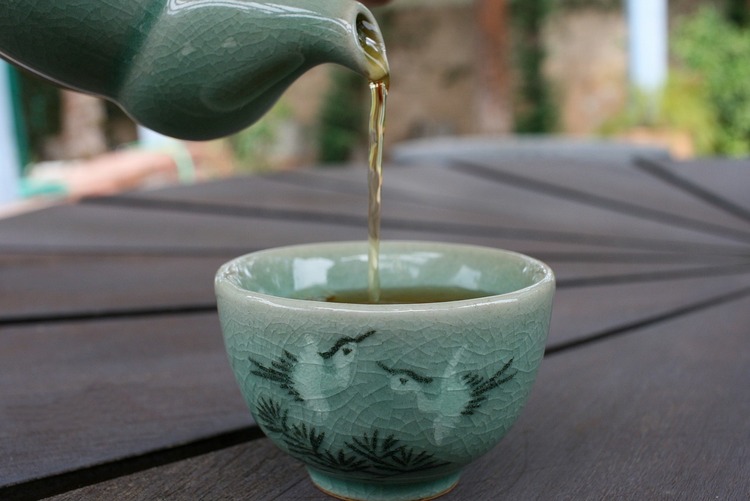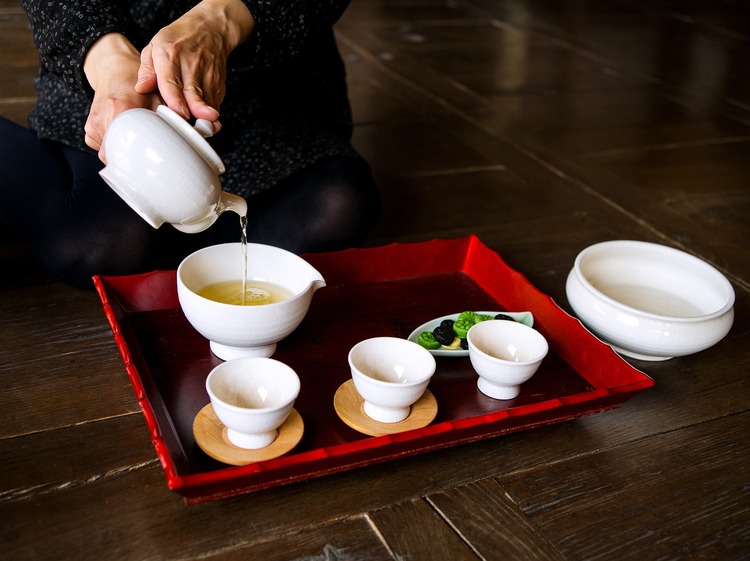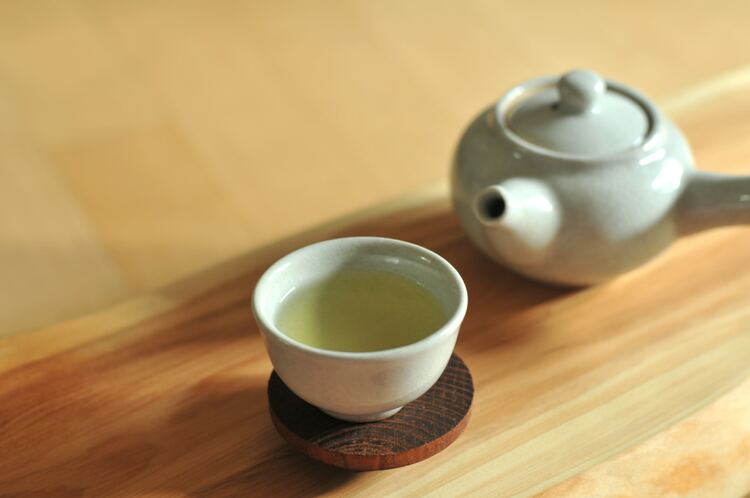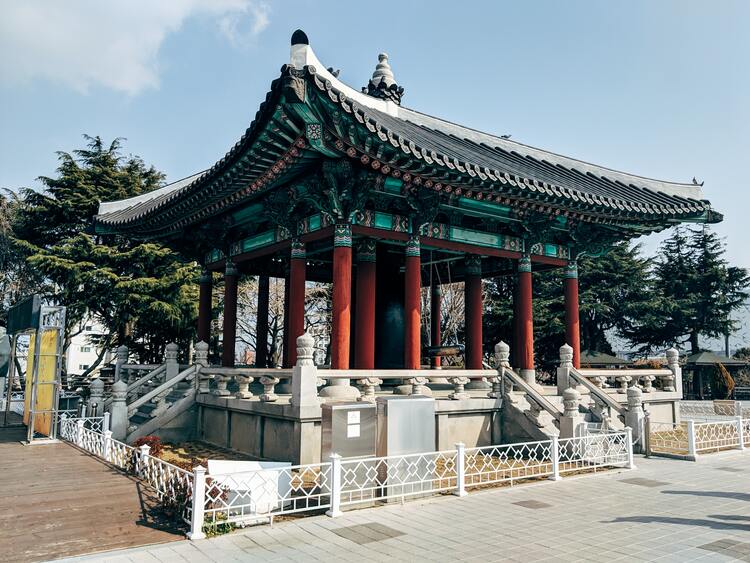Korean teas are deeply rooted in the country’s culture. From traditional tea ceremonies to modern tea shops, tea has become a beloved part of Korean culture.
Green tea grown in Boseong is one of the most sought-after products. In addition to green tea, there are many other types of Korean tea to try (from barley to citron tea, there are many options).
In this article, we attempt to expand your tea horizons by showcasing several teas grown and consumed in Korea.
Please note: This article contains affiliate links, meaning I may earn a commission if you make a purchase by clicking a link. Of course, this comes at no extra cost to you and helps me keep offering readers solid information.

Types of Korean Teas
We start by highlighting some of the most popular types of Korean teas.
Green Teas
Green teas are made from unoxidized tea leaves and taste light and refreshing. Korean green teas are often steamed (like green teas produced in Japan), which gives them a slightly vegetal flavor.
Korea has a long-standing tradition of cultivating and consuming green tea, known as nokcha in Korean. Green tea is significant in Korean culture and is renowned for its health benefits and delicate flavors.
Korean green teas are primarily grown in several regions, the most famous being Boseong, Hadong, and Jeju Island.
One of the most well-known varieties of Korean green tea is the Jeoncha, also called Jeonju Yuyeon. Jeoncha is produced in Jeonju, a city famous for its tea culture. This tea is made from the first flush, which consists of young, tender leaves harvested in the spring.
Jeoncha is characterized by its vibrant green color and fresh, grassy flavor. It has a delicate sweetness with a slightly nutty undertone, making it a delightful and refreshing choice for green tea enthusiasts.
Another popular green tea from Korea is the Sejak. Sejak is made from leaves harvested after the first flush, during the late spring and early summer. This tea offers a milder and smoother taste compared to Jeoncha. It has a subtle floral aroma and a gentle vegetal flavor with hints of chestnut. Sejak green tea is cherished for its balance and elegance, often enjoyed during traditional tea ceremonies.
Korea is also renowned for producing powdered green tea known as matcha. The powdered tea leaves used to make matcha are carefully cultivated and shaded for several weeks before harvest. After harvesting, the leaves are ground into a fine powder.
Matcha has a vibrant green color and a rich, umami flavor. It is commonly used in traditional tea ceremonies and incorporated into modern culinary creations, such as matcha lattes, desserts, and confections.
Black Teas
Black teas are made from fully oxidized tea leaves with a strong, bold flavor.
Black tea, known as hongcha in Korean, is primarily grown in the Boseong and Hadong regions in the southern part of the country. The climate and soil conditions in these areas favor tea cultivation, allowing for the production of high-quality black teas.
One of the notable black teas from Korea is the Jungjak Black Tea. Jungjak refers to the second flush, which occurs in the late spring and early summer. This tea is made from the leaves harvested during this period, resulting in a rich, full-bodied flavor. It is known for its smoothness and malty notes, with hints of caramel and honey.
Another famous black tea from Korea is the Sejak Black Tea, which is made from the leaves harvested during the first flush in the spring. This tea has a lighter and more delicate flavor than Jungjak Black Tea. It is often described as having a floral and fruity aroma with a subtle sweetness.
Korean black teas are often blended with other ingredients like fruit or flowers to create unique flavors.

Other Leaf Teas
As you may know, green and black teas are known as “true teas” since they are produced from the Camellia sinensis plant.
In Korea, there are other leaf teas consumed. Here are some examples of these teas:
- Jujube Leaf Tea: Made from the leaves of the jujube tree, this tea offers a mild and slightly tangy flavor.
- Mulberry Leaf Tea: Made from the leaves of the mulberry tree, this tea has a subtle and grassy taste.
- Perilla Leaf Tea: Made from the leaves of the perilla plant, this tea has a refreshing flavor with hints of mint and earthiness.
- Persimmon Leaf Tea: Made from the leaves of the persimmon tree, this tea has a smooth and slightly sweet taste.
- Ginseng Leaf Tea: Made from the leaves of the ginseng plant, this tea offers a mild and slightly bitter flavor. Ginseng leaf tea is often enjoyed for its potential energizing and revitalizing effects.
- Bamboo Leaf Tea: Made from bamboo plant leaves, this tea has a light and refreshing taste. Bamboo leaf tea is appreciated for its potential detoxifying properties and is often a calming beverage.
- Mint Leaf Tea: Made from various mint leaves, such as peppermint or spearmint, this tea has a refreshing and invigorating flavor.
- Artemisia Leaf Tea: Made from the leaves of the artemisia plant, this tea has a distinctive herbal and slightly bitter taste.
- Lotus Leaf Tea: Made from the lotus plant leaves, this tea has a mild and slightly earthy taste.
Fruit Teas
Fruit teas, known as “gwajeoncha” in Korean, are made by infusing various fruits with hot water (other ingredients, like herbs, may be blended with the fruits).
Some popular fruits used in these teas include citruses like lemon, orange, grapefruit, and berries like strawberry and blueberry. Other fruits like apple, peach, and mango are also commonly used. Additionally, herbs and flowers such as mint, lavender, and hibiscus are often added to enhance the flavor and visual appeal of the teas.
Here is a comprehensive list of the flavors you may encounter:
- Yuja Cha (Yuzu Tea): Made from yuja fruit (similar to lemon) simmered with honey or sugar.
- Bokbunja Cha: Made from Korean black raspberries, known for their sweet and tart flavor.
- Persimmon Tea: Made from dried persimmon slices, offering a naturally sweet and fruity taste.
- Omija Cha: Made from omija berries, known as “five-flavor berries” due to their sweet, sour, salty, bitter, and spicy flavors.
- Aloe Vera Tea: Made from aloe vera gel, providing a refreshing and soothing beverage.
- Citron Tea: Made from citron fruit, giving a sweet and citrusy flavor.
- Jujube Tea: Made from jujube fruit (Korean dates), offering a naturally sweet and caramel-like taste.
- Pomegranate Tea (seeds or juice)
- Blueberry Tea (dried or fresh fruit)
- Raspberry Tea
- Strawberry Tea
- Mango Tea (fruit or flavoring)
- Pineapple Tea (fruit or flavoring)
- Kiwi Tea
- Apple Tea (slices or flavoring)
- Peach Tea (fruit or flavoring)
- Grape Tea (fruit or juice)
- Watermelon Tea (fruit or flavoring)
- Lemon Tea (juice or zest)
- Orange Tea (slices or zest)
- Grapefruit Tea (sliced or flavoring)
- Plum Tea (dried fruit or flavoring)
- Mulberry Tea (leaves or fruits)
- Cherry Tea
- Cranberry Tea (fruit or juice)

Flower Teas
Korean flower teas, also known as “hwajeoncha” in Korean, hold a special place in the country’s tea culture. These teas are made by infusing various flowers with hot water, resulting in aromatic and visually appealing beverages. Flower teas are valued not only for their delicate flavors but also for their soothing properties.
Korea boasts a rich variety of native flowers that create beautiful and flavorful teas. Some of the most popular Korean flower teas include:
- Chrysanthemum Tea: Made from dried flowers, this tea offers a subtle floral aroma and a slightly sweet taste.
- Rose Tea: Made from dried rose petals, rose tea exudes a romantic and fragrant aroma. It has a subtly sweet and floral taste, making it a soothing and uplifting beverage.
- Lotus Flower Tea: Made from dried lotus flowers, this tea has a unique and slightly nutty flavor. It is known for its calming properties and is often enjoyed to relax and unwind. Lotus flower tea is also associated with purity and enlightenment in Korean culture.
- Hibiscus Tea: Made from dried hibiscus flowers, this tea offers a vibrant red infusion and a tart, tangy flavor. It is refreshing and can be enjoyed both hot and cold.
- Jujube Flower Tea: Made from dried jujube flower buds, this tea has a delicate and slightly sweet taste. Jujube flower tea is known for its soothing effects on digestion and is often enjoyed after meals.
- Azalea Tea: Made from dried azalea flowers, this tea has a light and floral taste. Azalea tea is often enjoyed for its refreshing and cooling properties, making it a popular choice during hot summer.
- Lavender Tea: Made from dried lavender flowers, this tea has a calming and aromatic flavor.
The teas are often enjoyed independently without adding sweeteners to appreciate their natural taste and fragrance fully.
Root Teas
Korean root teas, also known as “beoseotcha” in Korean, are herbal teas made from the roots of various plants. Root teas are appreciated for their earthy taste and therapeutic properties.
Korea has a rich tradition of utilizing roots for medicinal purposes, and many of these roots are incorporated into teas. Here are some of the commonly consumed Korean root teas:
- Ginseng Tea: Made from the roots of Korean ginseng, this tea is highly regarded for its refreshing and energizing properties. Ginseng tea has a distinct earthy and slightly bitter taste. It is believed to enhance stamina, boost the immune system, and improve mental focus.
- Licorice Root Tea: Made from the roots of licorice plants, this tea has a naturally sweet and slightly woody flavor. Licorice root tea is known for its soothing effects on the throat and respiratory system. It is often enjoyed for its potential anti-inflammatory and digestive benefits.
- Solomon’s Seal Tea: Made from the roots of the Solomon’s Seal plant, this tea has a mild and slightly nutty taste. Solomon’s Seal root tea is valued for its potential benefits in supporting joint health and promoting hydration.
- Burdock Root Tea: Made from the roots of the burdock plant, this tea has a slightly sweet and earthy flavor. Burdock root tea is believed to support detoxification and promote healthy skin.
- Dandelion Root Tea: Made from the roots of dandelion plants, this tea has a rich and slightly bitter taste. Dandelion root tea is revered for its potential benefits in supporting liver health and aiding digestion. It is often consumed as a cleansing and detoxifying tea.
- Astragalus Root Tea: Made from the roots of the astragalus plant, this tea has a mildly sweet and woody flavor. Astragalus root tea is known for its potential immune-boosting and adaptogenic properties.
- Korean Angelica Root Tea: Made from the roots of Korean angelica plants, this tea has a distinct and slightly bitter taste. Korean angelica root tea is believed to support women’s health and promote circulation.

Grain Teas
Korean grain teas, known as “misutgaru” in Korean, are flavorful beverages made from a combination of roasted grains and other ingredients. These teas have been enjoyed for centuries in Korea, offering a comforting and nutritious alternative to traditional tea options. Grain teas are valued for their toasty flavors, rich aromas, and potential health benefits.
The base of Korean grain teas typically consists of a mixture of grains, seeds, and nuts. The exact composition can vary, but some common ingredients include roasted barley, brown rice, black rice, corn, sesame seeds, and peanuts. Additional elements such as cinnamon, dried fruits, and sweeteners may also be added for flavor enhancement.
Making Korean grain teas involves roasting the grains and other ingredients to bring out their natural flavors and aromas. Once roasted, the mixture is finely ground into powder or left slightly coarser, depending on personal preference. The resulting powder is mixed with hot water to create a nourishing and satisfying beverage.
Here are some examples of Korean grain teas:
- Boricha: Made from roasted barley, boricha has a mild and soothing flavor and is a caffeine-free alternative to traditional tea.
- Injeolmi-cha: Inspired by the traditional Korean rice cake called “injeolmi,” this tea is made from roasted brown rice, offering a distinctive toasted rice flavor.
- Oksusu-cha: Made from roasted corn kernels, oksusu-cha has a slightly sweet and nutty taste, reminiscent of fresh corn.
- Heukimja-cha: Made from roasted black sesame seeds, heukimja-cha has a nutty and aromatic flavor, offering a unique taste experience.
- Yulmu-cha: Made from roasted Job’s tears (a type of grain), yulmu-cha has a subtly sweet and nutty taste, often enjoyed as a cooling and refreshing beverage.
- Gamcha: Made from roasted ginseng, brown rice, and jujube, gamcha offers a blend of earthy, slightly sweet, and herbal flavors.
- Ssuk-cha: Ssuk-cha is made from roasted mung beans and is known for its subtly sweet and nutty taste, providing a comforting and nourishing beverage.
- Kong-garu-cha: Made from roasted soybeans, kong-garu-cha has a rich and nutty flavor, often enjoyed for its potential health benefits and as a caffeine-free alternative to traditional tea.
Overall, when it comes to Korean teas, there is a great opportunity to appreciate native and nationally grown/produced ingredients.

Korean Tea Culture
Historical Influence
The Joseon Dynasty, which ruled from 1392 to 1910, has deeply influenced Korean tea culture. During this time, tea was an important part of daily life, and people of all social classes enjoyed it. Buddhist monks also played a significant role in shaping Korean tea culture, as they introduced tea to the country and developed a unique way of preparing and serving it.
Modern Tea Culture
Today, Korean tea culture is still thriving, and there are many tea houses and tea ceremonies that you can experience. Tea houses are a popular gathering place for friends and family, offering a wide variety of teas, snacks, and desserts. On the other hand, tea ceremonies are more formal affairs steeped in tradition. They often involve a set of rituals and practices that date back hundreds of years.
When you visit a tea house or attend a tea ceremony, you can expect to be served various teas, each with its distinctive flavor and aroma. Each of these teas has its unique health benefits, and they are often enjoyed for their calming and soothing properties.

Korean Tea Production
Tea Growing Regions
Boseong is a famous tea-growing region in South Korea. The tea bushes are grown on the hills’ slopes, providing the perfect environment for the tea plants to grow. The tea leaves are hand-picked by skilled workers, ensuring that only the best ones are used for making tea.
Jeju is another tea-growing region in South Korea. Jeju tea is known for its unique taste and aroma. The tea bushes are grown on Jeju Island’s volcanic soil, giving the tea its distinct flavor.
Tea Harvesting and Processing
Tea harvesting in South Korea usually starts in April and lasts until October. The tea leaves are harvested by hand, ensuring that only the best ones are used for making tea.
After the tea leaves are harvested, they are processed to make different types of tea. The processing method depends on the type of tea that is being made.
Frequently Asked Questions
What are some popular types of tea in Korea?
Korea is famous for its green tea. Some popular types of tea in Korea include:
- Jeoncha: This is a green tea that is harvested in spring. It has a light, refreshing taste and a delicate aroma.
- Sejak: This is another green tea that is harvested in spring. It has a slightly stronger taste than Jeoncha and a nutty flavor.
- Hwangcha: This is a yellow tea made by lightly roasting the leaves. It has a sweet taste and a golden color.
What are the health benefits of Korean teas?
Korean teas are known for their health benefits. Some of the benefits of drinking Korean teas include:
- Boosting the immune system: Korean teas are rich in antioxidants, which help boost the immune system and fight disease.
- Reducing stress: Korean teas contain L-theanine, an amino acid that helps to reduce stress and promote relaxation.
- Improving digestion: Korean teas can help to improve digestion and relieve constipation.
How is Korean tea traditionally prepared?
Korean tea is traditionally prepared using a small teapot called a “jeonju.” The tea leaves are placed in the teapot, and hot water is added. The tea is steeped for a few minutes before being poured into small cups.
What is the history of tea in Korea?
Tea has been a part of Korean culture for over a thousand years. China brought The first tea plants to Korea during the Goryeo Dynasty (918-1392). Since then, tea has played an important role in Korean society and culture.
What are some unique flavors of Korean teas?
Korean teas come in a variety of unique flavors. Some of the most popular flavors include:
- Citron tea: This tea is made from citron fruit and has a sweet, tangy flavor.
- Corn tea: This tea is made from roasted corn kernels and has a nutty flavor.
- Persimmon leaf tea: This tea is made from the leaves of the persimmon tree and has a slightly bitter taste.
Where can I find authentic Korean teas?
Authentic Korean teas can be found at Korean tea shops and online retailers. Look for teas sourced from Korea with a high-quality rating.
Here are some recommendations:
Premium Organic Pure & Blended Tea from Jeju


Korean Traditional Tea Barley Tea

Dongsuh Korean Brown Rice Green Tea

I hope you have enjoyed the article and learned something new. See you next time!
Which Korean teas have you tried?